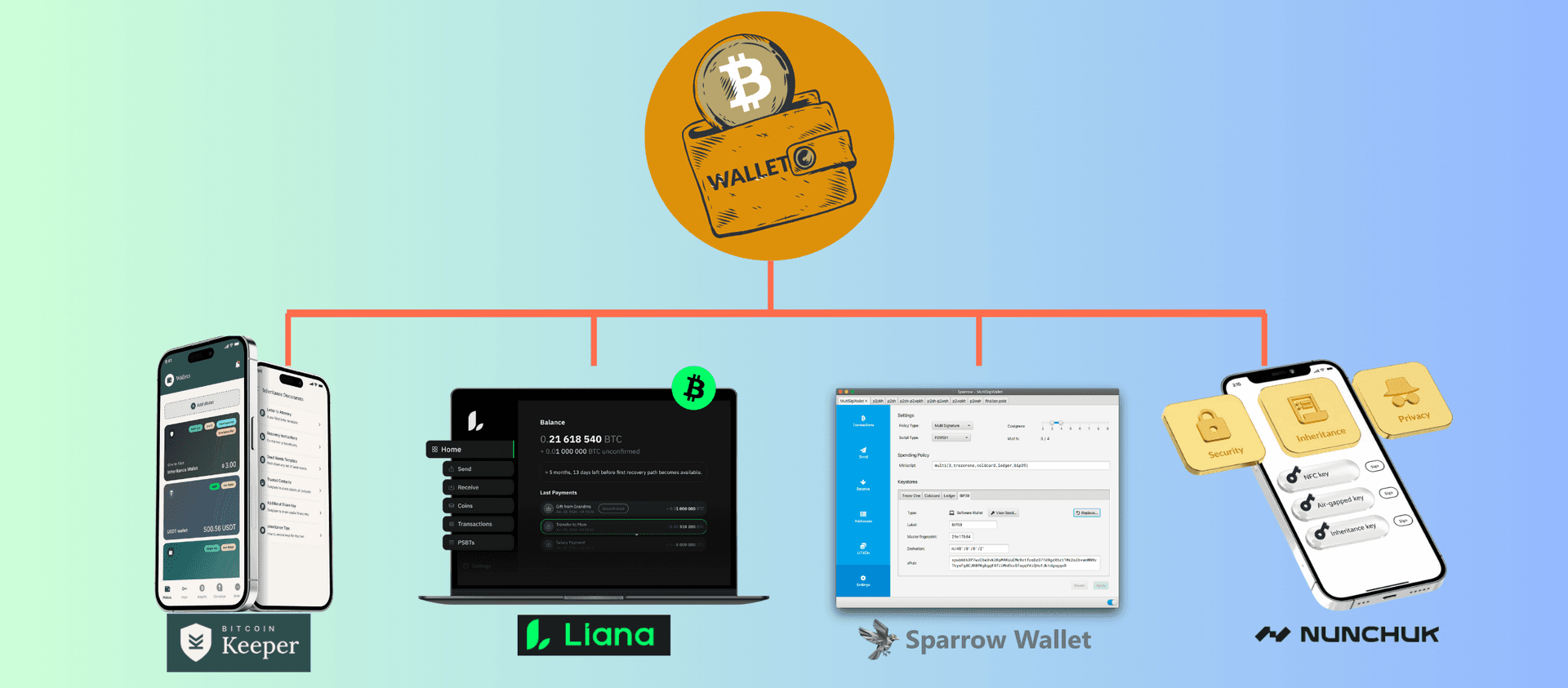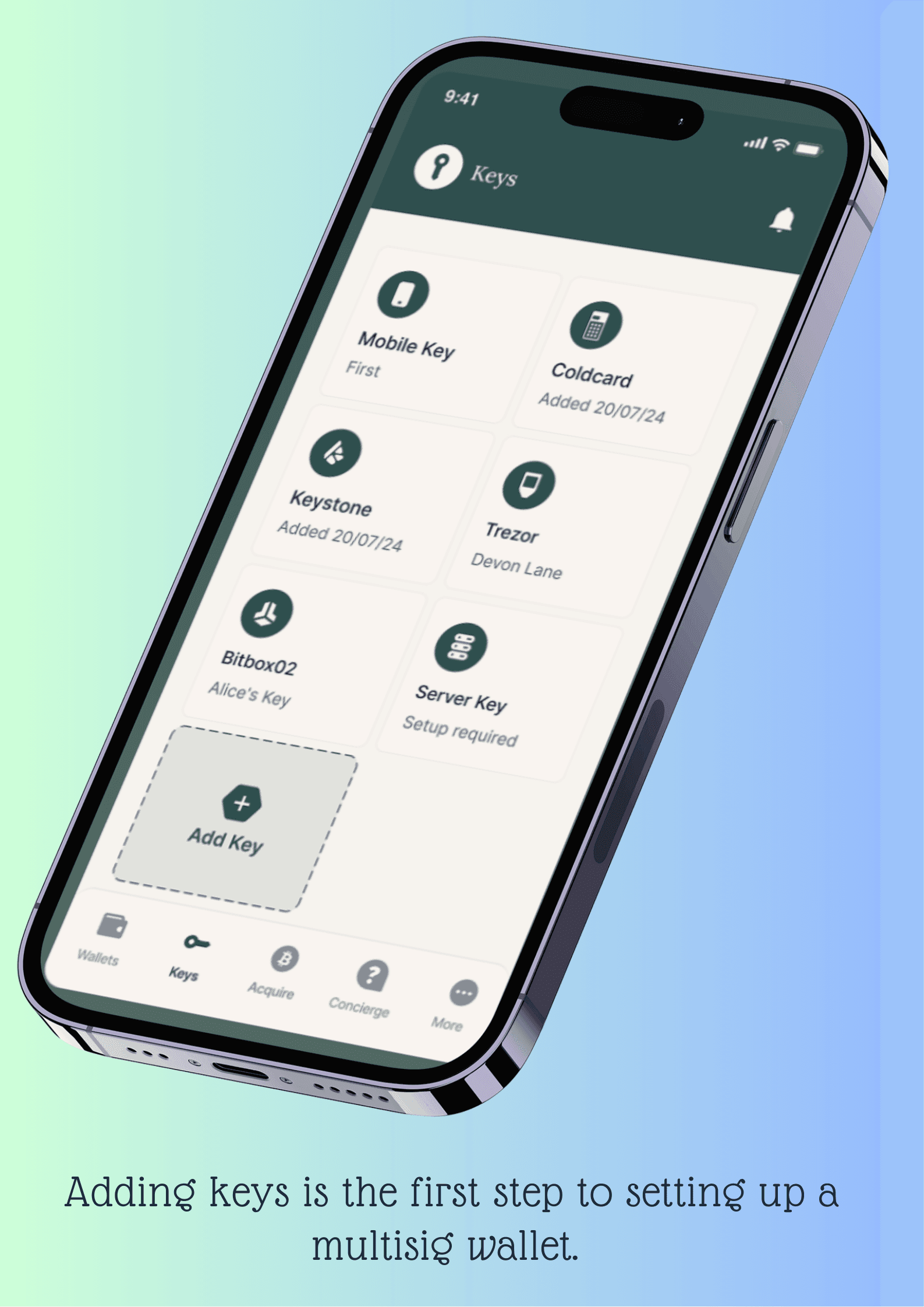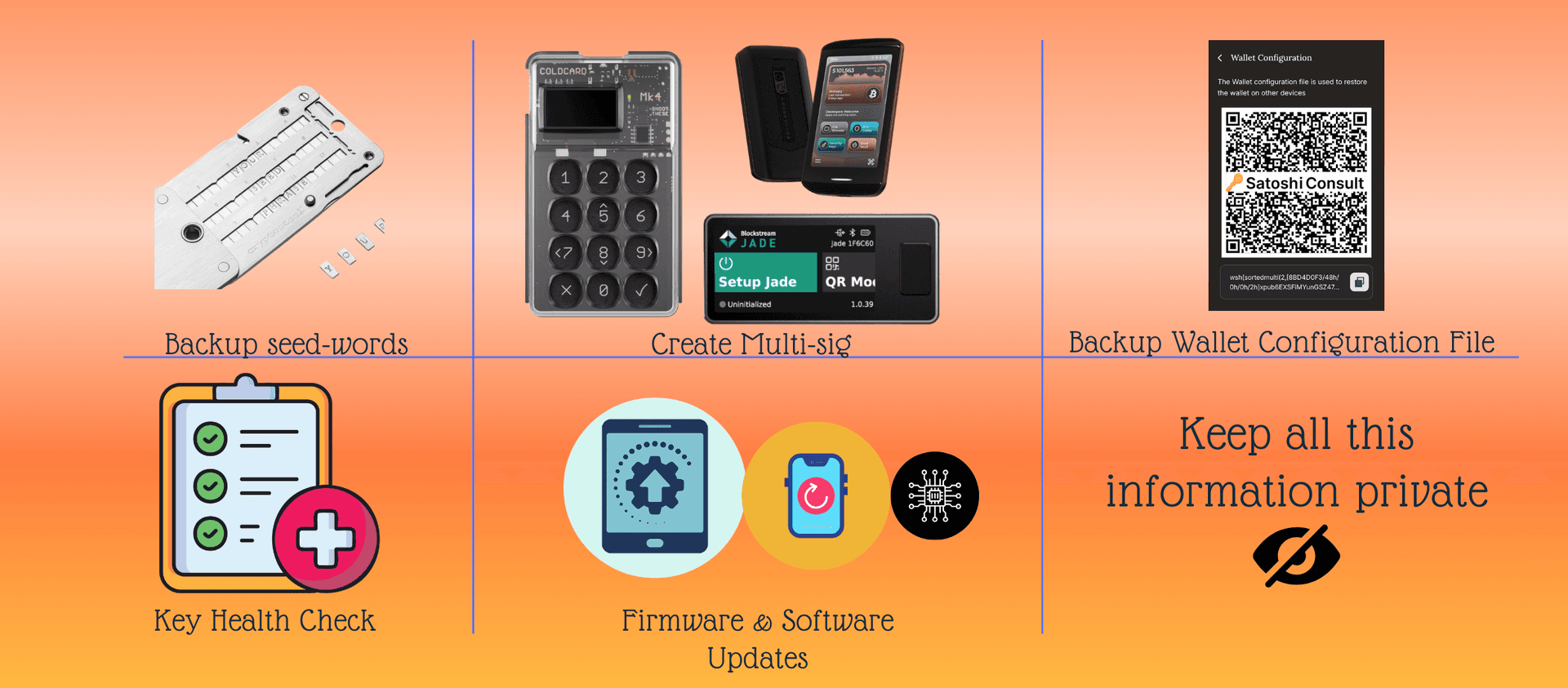How to Self-Custody Your Bitcoin (The Complete Guide)
Learn the basics of single-sig and multi-sig wallets.
Abhilash S Nair
September 12, 2025

Bitcoin gives you the power to be your own bank. But with that power comes responsibility. Self-custodying your Bitcoin in a wallet where you control the private keys—is the only way to truly own your coins.
In this guide, we’ll break down what self-custody wallets are, the different types available, and the best practices you should follow to keep your Bitcoin safe for the long term.
What Are Self-Custody Wallets?

A self-custody wallet (also called a non-custodial wallet) is a wallet where only you have access to the private keys. Unlike exchanges or custodial services, there’s no company holding your coins on your behalf.
“Not your keys, not your coins.”
When you set up a self-custody wallet, you’ll receive a seed phrase—a 12-or 24-word recovery phrase that acts as the ultimate backup for your Bitcoin.
Best Practices:
- Write down your seed phrase on paper or a durable backup material (steel plates are popular).
- Never store your seed phrase online or take photos of it.
Create multiple backups and store them in secure, separate locations.
Hot Wallets/ Singlesig Wallets: Convenience Comes First

A hot wallet is a wallet that stays connected to the internet—usually a mobile app or desktop wallet. Hot wallets are convenient for everyday transactions but are less secure because they’re exposed to online threats.
When to Use:
- For smaller amounts you plan to spend or move often.
- As a stepping stone to learn the basics of Bitcoin self-custody.
Best Practices:
- Enable biometric login and a strong passcode on your device.
- Do periodic key health checks: ensure your wallet app is up-to-date and your backups are valid.
Don’t store large amounts in a hot wallet—treat it like the cash in your pocket.
Multisig Wallets: Advanced Security

For larger Bitcoin holdings, multisignature (multisig) wallets offer an extra layer of protection. Multisig requires two or more keys to authorize a transaction, reducing the risk of losing all your Bitcoin if one key is compromised.
Example Setup:
- 2-of-3 setup: You create three keys and need any two of them to move funds.
- Keys can be stored on different devices (e.g., hardware wallet, mobile wallet, and a secure backup).
Wallet Configuration Files: A Must-Have
In addition to seed phrases, multisig wallets require a wallet configuration (or descriptor) file. This file contains critical information about your multisig setup—such as the public keys, quorum (e.g., 2-of-3), and derivation paths.
Why it matters: Without the configuration file, you might not be able to fully recover your multisig wallet, even if you have all the individual seed phrases.
Best Practices:
- Back up the configuration file in multiple secure locations, separate from your seed phrases.
- Distribute keys geographically—don’t keep all keys and backups in one place.
- Regularly perform key and configuration file health checks: test that each key and backup can sign a transaction.
Consider using a combination of hot keys and hardware wallets as different signers.
“Multisig isn’t just for techies—it’s for anyone who values peace of mind.”
Final Checklist: Self-Custody Best Practices

- Backup your seed phrase in stainless steel and store it in multiple secure locations.
- For multisig, also back up the wallet configuration/descriptor file—it’s as important as your keys.
- Use hardware wallets or multisig setups for significant amounts.
- Do periodic health checks on your keys, backups, and configuration files.
- Don’t share sensitive information—your seed phrase and config file are the ultimate ownership proof.
- Stay updated: keep your wallet software and devices secure and up-to-date.
Own Your Bitcoin, Own Your Future
By learning how to self-custody, you’re taking control of your financial freedom. Start small, follow best practices, and graduate to more advanced setups like multisig as your Bitcoin holdings grow.
“The future belongs to those who hold their keys—and their configuration files.”

Ready to set up your self-custody wallet? Pick a wallet that fits your needs, secure your seed phrase and configuration files, and take your first step toward financial independence today. Think you need help to get going? Reach out here.